Filter News
Area of Research
News Topics
- (-) Materials Science (26)
- 3-D Printing/Advanced Manufacturing (30)
- Advanced Reactors (5)
- Artificial Intelligence (45)
- Big Data (28)
- Bioenergy (16)
- Biology (22)
- Biomedical (13)
- Biotechnology (10)
- Buildings (29)
- Chemical Sciences (30)
- Clean Water (6)
- Composites (11)
- Computer Science (46)
- Critical Materials (7)
- Education (2)
- Emergency (3)
- Energy Storage (15)
- Environment (38)
- Exascale Computing (25)
- Fossil Energy (4)
- Frontier (21)
- Fusion (12)
- Grid (16)
- High-Performance Computing (45)
- Hydropower (1)
- Isotopes (17)
- ITER (2)
- Machine Learning (23)
- Materials (24)
- Mathematics (7)
- Microelectronics (2)
- Microscopy (4)
- Molten Salt (1)
- Nanotechnology (2)
- National Security (34)
- Neutron Science (23)
- Nuclear Energy (15)
- Partnerships (29)
- Physics (9)
- Polymers (5)
- Quantum Computing (20)
- Quantum Science (22)
- Security (8)
- Simulation (24)
- Space Exploration (3)
- Statistics (3)
- Summit (14)
- Transportation (15)
Media Contacts

ORNL researchers created and tested two methods for transforming coal into the scarce mineral graphite, which is used in batteries for electric vehicles.

The Proton Power Upgrade project at ORNL's Spallation Neutron Source has achieved its final key performance parameter of 1,250 hours of neutron production at 1.7 megawatts of proton beam power on a newly developed target.

Biochemist David Baker — just announced as a recipient of the Nobel Prize for Chemistry — turned to the High Flux Isotope Reactor (HFIR) at Oak Ridge National Laboratory for information he couldn’t get anywhere else. HFIR is the strongest reactor-based neutron source in the United States.
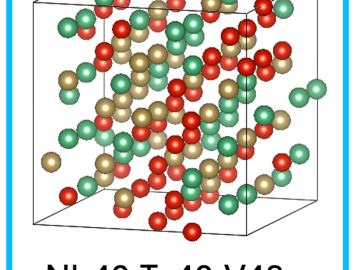
A study led by the Department of Energy’s Oak Ridge National Laboratory details how artificial intelligence researchers created an AI model to help identify new alloys used as shielding for housing fusion applications components in a nuclear reactor. The findings mark a major step towards improving nuclear fusion facilities.
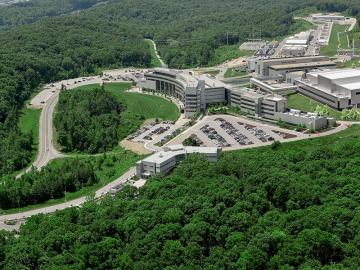
ORNL's Spallation Neutron Source, the nation’s leading source of pulsed neutron beams for research, was recently restarted after nine months of upgrade work.
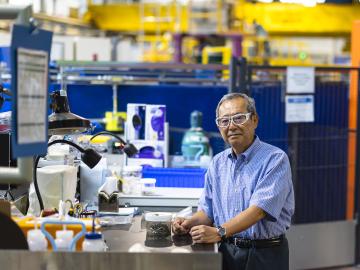
Distinguished materials scientist Takeshi Egami has spent his career revealing the complex atomic structure of metallic glass and other liquids — sometimes sharing theories with initially resistant minds in the scientific community.
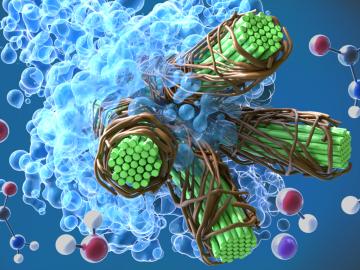
A team led by scientists at ORNL identified and demonstrated a method to process a plant-based material called nanocellulose that reduced energy needs by a whopping 21%, using simulations on the lab’s supercomputers and follow-on analysis.
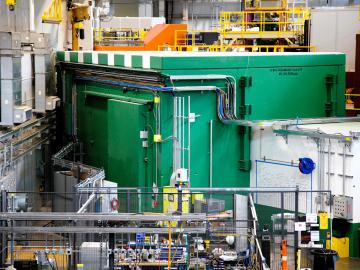
DOE commissioned a neutron imaging instrument, VENUS, at the Spallation Neutron Source in July. VENUS instrument scientists will use AI to deliver 3D models to researchers in half the time it typically takes.
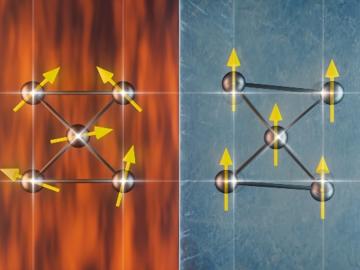
At ORNL, a group of scientists used neutron scattering techniques to investigate a relatively new functional material called a Weyl semimetal. These Weyl fermions move very quickly in a material and can carry electrical charge at room temperature. Scientists think that Weyl semimetals, if used in future electronics, could allow electricity to flow more efficiently and enable more energy-efficient computers and other electronic devices.

Seven entrepreneurs comprise the next cohort of Innovation Crossroads, a DOE Lab-Embedded Entrepreneurship Program node based at ORNL. The program provides energy-related startup founders from across the nation with access to ORNL’s unique scientific resources and capabilities, as well as connect them with experts, mentors and networks to accelerate their efforts to take their world-changing ideas to the marketplace.


